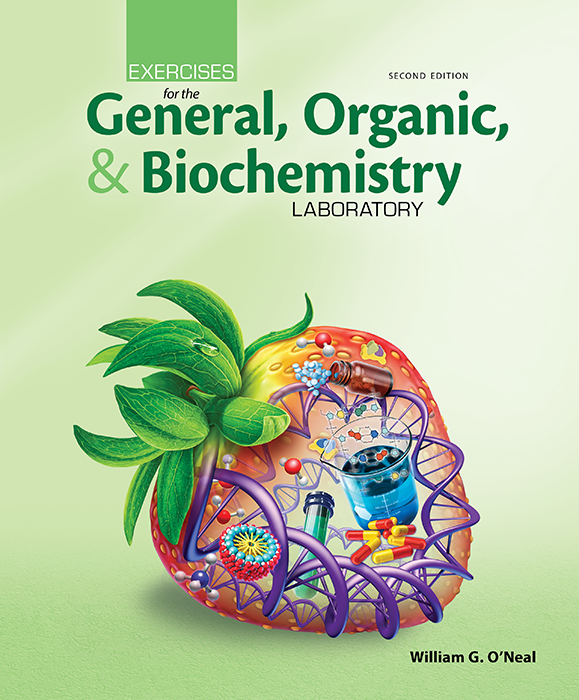Exercises for the General, Organic, & Biochemistry Lab, 2e
William G. O'Neal
This full-color lab manual is intended for a one-semester general, organic, and biochemistry course or introductory chemistry course. The procedures are written with the goal of simplifying a challenging subject by applying concepts to everyday life and include a variety of photographs and figures to illustrate the main ideas and various lab setups.

Top Hat Interactive eText
requires a join code from instructor
$69
Interactive eText
does not require a join code
$59.00
Hybrid
requires a join code from instructor
$79.00

Table of Contents for Exercises for the General, Organic, & Biochemistry Lab, 2e
- Front Matter
- Lab 1: Think Like a Chemist
- Lab 2: Laboratory Measurements and Units
- Lab 3: Density and Measurement Precision
- Lab 4: Chemical and Physical Properties
- Lab 5: Calorimetry and Specific Heat
- Lab 6: Elements and the Periodic Table
- Lab 7: Nutritional Minerals in Cereal
- Lab 8: Ionic and Covalent Bonding Patterns
- Lab 9: Formula of a Compound
- Lab 10: Verification of Reaction Stoichiometry
- Lab 11: Synthesis of Aspirin
- Lab 12: Hydrocarbon Isomerism and Bond Reactivity
- Lab 13: Structures of Carbohydrates

Key features
- Initiates the study of basic concepts through concise introductory material and pre-lab questions that familiarize students with the concepts presented in each exercise
- Students investigate the mysteries of matter by following the clearly written procedures and recording data and observations on the provided data sheets
- Safety notes, OSHA pictograms, and Technique Tip boxes help students develop skills in laboratory technique while safely working through procedures
- Critical thinking questions assist students in making connections between what they have learned in lab and how this knowledge can be applied to their studies